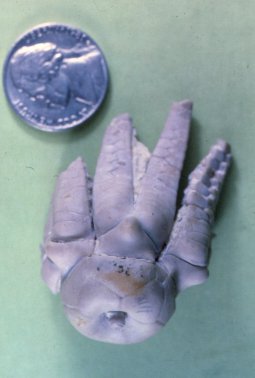Introduction: Crinoids from the Deer Creek Formation
The Deer Creek Formation in Nebraska is comprised of several formal members and informally named beds. These are from bottom to top:
- Ozawkie Limestone, nearshore
- Oskaloosa Shale, nearshore
- Rock Bluff Limestone, transgressive
- Larsh Shale, offshore
- Haynies Limestone bed, transgressive
- Burr Oak Shale bed, offshore
- Ervine Creek Limestone Member, regressive.
These rocks are exposed along the Missouri River Bluffs and along Weeping Water Creek Valley in Cass County. They contain two important crinoid assemblages. The older assemblage was found at the contact between the Haynies Limestone bed below and the Burr Oak Shale bed above. This older assemblage contains small, inornate crinoids that have fairly simple arm structures and thin plates. They probably lived in fairly deep, cool water with low oxygen content and a short food supply. The younger assemblage was found in the Ervine Creek Limestone member. The crinoids in the younger assemblage have fairly complex arm structures, food gathering fans, and fairly thick, ornamented plates which suggests they preferred fairly shallow, warm water with larger food supplies.
Peter Holterhoff and Roger Pabian (1991) examined these crinoids in some detail and found that in this stratigraphic interval, crinoids with the complex arms and food gathering structures could adapt in both shallow and deep water conditions whereas those with the simple arms and food gathering structures adapted best only in deep water.
Delocrinus subhemisphericus
